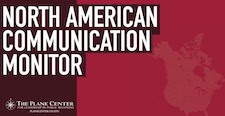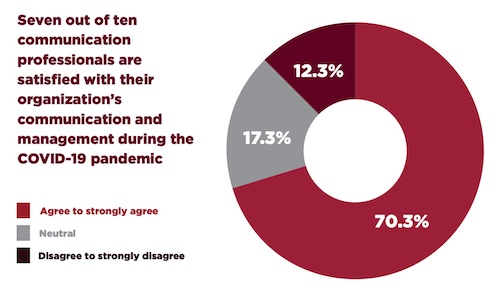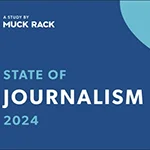 |
Seven out of 10 communications professionals are satisfied with their organization’s outreach and management policies during the COVID-19 pandemic, according to a new study conducted by the University of Alabama’s Plank Center for Leadership in Communications.
The Center’s 2020-21 North American Communication Monitor surveyed 1,046 communication professionals from the U.S. and Canada on topics including ethical challenges, cybersecurity, gender equality, salaries and competency development.
The satisfaction level is much higher for older workers. For all over-40 age groups, at least three quarters said they were satisfied with their organization’s performance. That number drops to 67.5 percent for those from 30 to 39 and 51.9 percent for those 29 or younger.
 |
Not surprisingly, the pandemic has been top of mind for a large majority of communications pros. Three-quarters of those surveyed said they pay attention to news about COVID-19, while more than eight in 10 (83.2 percent) say that the coronavirus outbreak is a heavily discussed topic.
COVID-19 has also had a significant impact on the daily work of communications professionals. Roughly two out of three respondents (66.2 percent) said that the pandemic is relevant to their work, with nearly the same number (65.8 percent) noting that it had a direct impact on the daily work of their department or agency.
The effect of the pandemic was particularly noted by those who worked for public companies. Out of those professionals, 85.2 percent said that the pandemic was relevant to their work, and 76.5 thought it affected their daily duties. Those numbers were significantly lower at consultancies and agencies, with 56.9 percent finding the pandemic relevant to their work and 59 percent noting its direct impact.
A variety of other factors also affected the impact that the pandemic had on communication pros. Those between 40 and 49 seemed to be the most affected (with 70.9 percent finding the pandemic relevant to their daily work), while the impact was felt less among those under 29 (55 percent).
Those higher in the pecking order also said they felt the effects of the pandemic on their daily work most strongly, with CEOs and team leaders being more likely to mention that affect than were the team members working for them.
The study also asked respondents which sources they use most to find information about COVID-19. Public health organizations and officials were used by 72 percent, with national news outlets (69.2 percent) and local news outlets (61.9 percent) next on the list. At the bottom of the list were social influencers and bloggers (33.8 percent) and church or religious leaders (33.2 percent).
Public health organizations also ranked the highest when it came to trust, with 34.6 percent of those surveyed calling them the most trusted source. National news outlets were the most trusted source for 14.9 percent, with social media (8.1 percent) and local news outlets (6.9 percent) lagging behind.


 Employees at U.S. companies are experiencing high levels of burnout, but managers are lagging behind when it comes to their awareness of the problem
Employees at U.S. companies are experiencing high levels of burnout, but managers are lagging behind when it comes to their awareness of the problem Brand has a powerful effect on a company’s valuation, but the level of brand understanding in the investment community leaves a lot to be desired, according to a new study from Brodeur Partners, Interbrand and NewtonX.
Brand has a powerful effect on a company’s valuation, but the level of brand understanding in the investment community leaves a lot to be desired, according to a new study from Brodeur Partners, Interbrand and NewtonX. AI may still be viewed with a wary eye by most media pros, but its use is growing, according to a new study from Muck Rack.
AI may still be viewed with a wary eye by most media pros, but its use is growing, according to a new study from Muck Rack. A new study from Walker Sands says that some marketers have been putting the cart before the horse when it comes to the relationship between marketing channels and business outcomes.
A new study from Walker Sands says that some marketers have been putting the cart before the horse when it comes to the relationship between marketing channels and business outcomes. Thought leadership can make made B2B brands more "powerful and attractive to buyers," according to Edelman report.
Thought leadership can make made B2B brands more "powerful and attractive to buyers," according to Edelman report.


 Have a comment? Send it to
Have a comment? Send it to 
Jun. 27, 2021, by Joe Honick
There seems to be a "split" or at least a question between the folks mentioned here as "satisfied" and those who answered the last survey question as to whether PR firms would require employees to be vaccinated. Would all those folks think clients would be satisfied to have non-vaccinated people coming out to be of service...or would firms' professional have to be masked when meeting with other employees and clients?